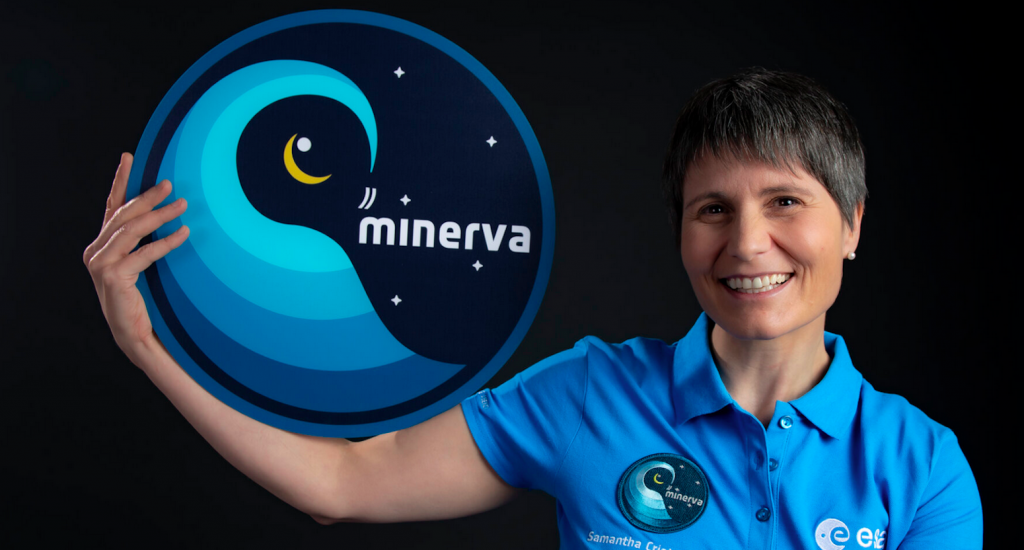
The arrival of Samantha Cristoforetti at the International Space Station (ISS) marked the start of the European Space Agency (ESA) Minerva mission, in which Italy takes part with six experiments of the Italian Space Agency (ASI). This is Samantha’s second space mission: her first mission on the ISS was in 2014 when the ESA astronaut spent 200 days of intense space activities for the Futura mission promoted by the ASI.
AstroSamantha – this is her Twitter name – was launched into space at 09:52 CEST on 27 April on a SpaceX Falcon 9 rocket from Launch Complex 39A at NASA’s Kennedy Space Center in Florida. The Italian astronaut was launched in the Crew Dragon Freedom capsule together with the other members of Crew-4,her NASA colleagues Kjell Lindgren, Bob Hines and Jessica Watkins, and docked to the ISS at 01:37 CEST on 28 April.
Samantha Cristoforetti served as Mission Specialist during this flight and then took the role of USOS Lead, responsible for operations within the US Orbital Segment comprising the US, European, Japanese and Canadian modules and components of the International Space Station for the duration of her mission.
During the mission, Samantha will carry out many scientific experiments in microgravity and will take part in ISS maintenance operations. She is also expected to support the commissioning of ESA’s European Robotic Arm (ERA).
On the ISS, the Italian astronaut will take part, as a test subject, in a number of human physiology experiments designed to monitor energy intake, assess the effects of microgravity on hearing, and study bone health, ageing processes and brain adaptation to space flight. AstroSamantha will also be involved in the demonstration of a technology for the use of virtual reality in orbit.
The Minerva mission will also include activities in the field of space biology, such as the new ASI Prometeo experiment that will investigate the consequences of oxidative stress in orbit, and Ovospace, another ASI experiment, aimed at investigating the role of microgravity on the maturation and development of ovarian cells. Finally, ASI’s Evoo project will study the impact of microgravity on the characteristics of Italian extra virgin olive oil.
“Space exploration, both human and robotic, has always represented one of the spearheads of the Italian role in international space activities. Astronauts are clearly the most visible symbol of this Italian excellence,” said ASI President Giorgio Saccoccia. “Samantha Cristoforetti’s return to the International Space Station this year, achieved through our negotiations with ESA over the past few years, also symbolically underlines the importance that our country has been giving to space activities for some time. I wish good luck and all the best in her work to Samantha for this new and extraordinary adventure!”
The name of the ESA mission in which Samantha Cristoforetti takes part is inspired by the Roman goddess of wisdom, the handicrafts and the arts, in homage to the competence and sophisticated craftsmanship of the men and women all over the world who make human spaceflight possible. The recognition of the long and collective work that precedes and guides human space missions – for example the design of experiments – is in line with the words that Samantha used to describe her mood and consciousness while conducting activities on the ISS: “Every little thing you do in orbit, even if it’s just a 20-minute activity to install and launch an experiment, is incredibly rewarding. As astronauts, we put the icing on the cake of many years of hard work required to develop an experiment and get it into space.”
Minerva is often depicted with her sacred owl and therefore this is a key feature of Samantha’s mission patch. The eye of the owl is a yellow Moon, casting a white glow onto the Earth. Its beak hints at the shape of the ISS, with its characteristic solar panels. The two lines also symbolise Samantha’s two missions to space. Waves of ever darker blue make up the body of the owl and encourage us to rise to the challenge and move farther into deep space.
For updates on the activities carried out by Samantha Cristoforetti visit the Minerva mission webpage, ESA YouTube channel or directly follow AstroSamantha on her Twitter and TikTok accounts.

